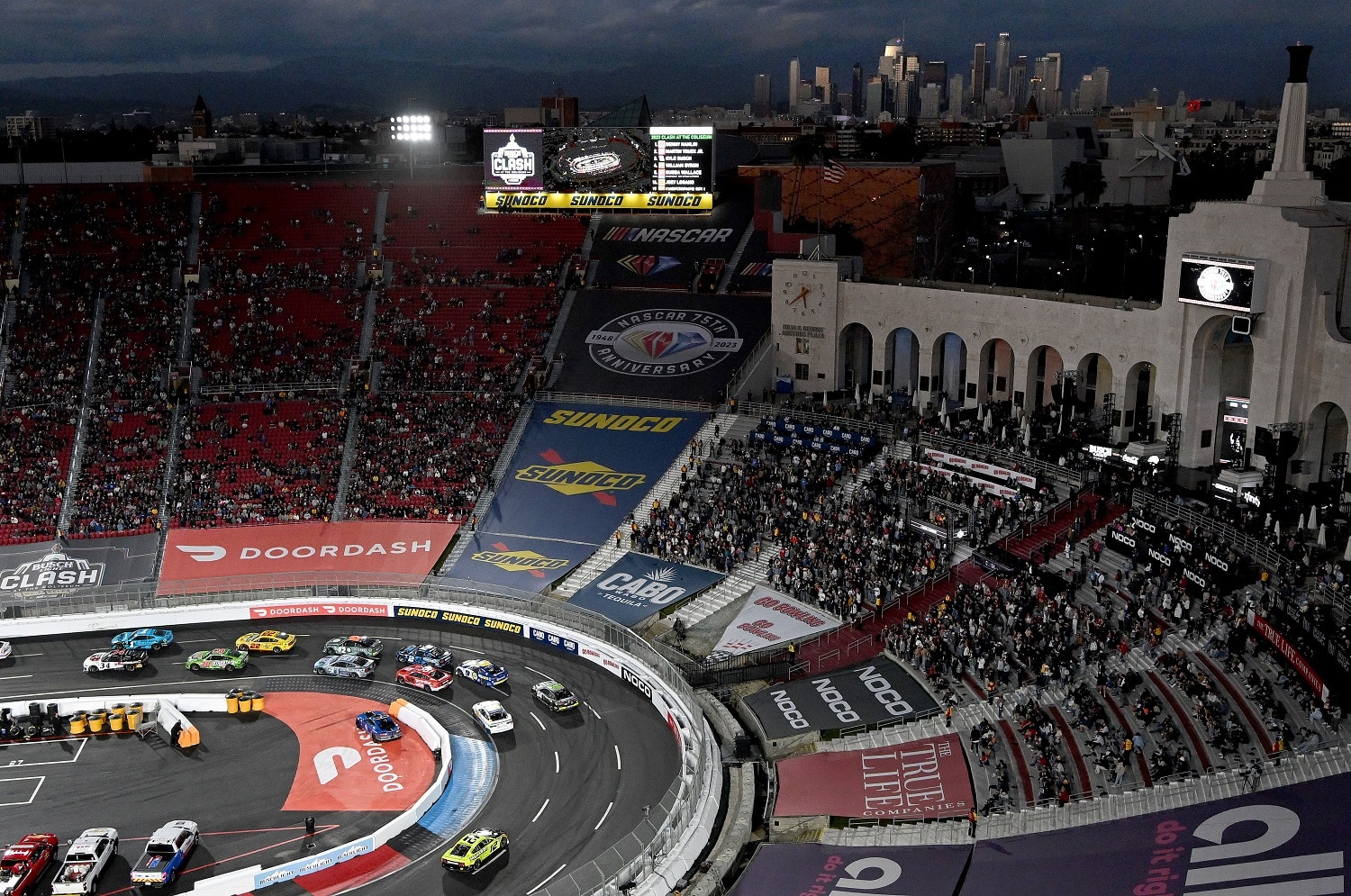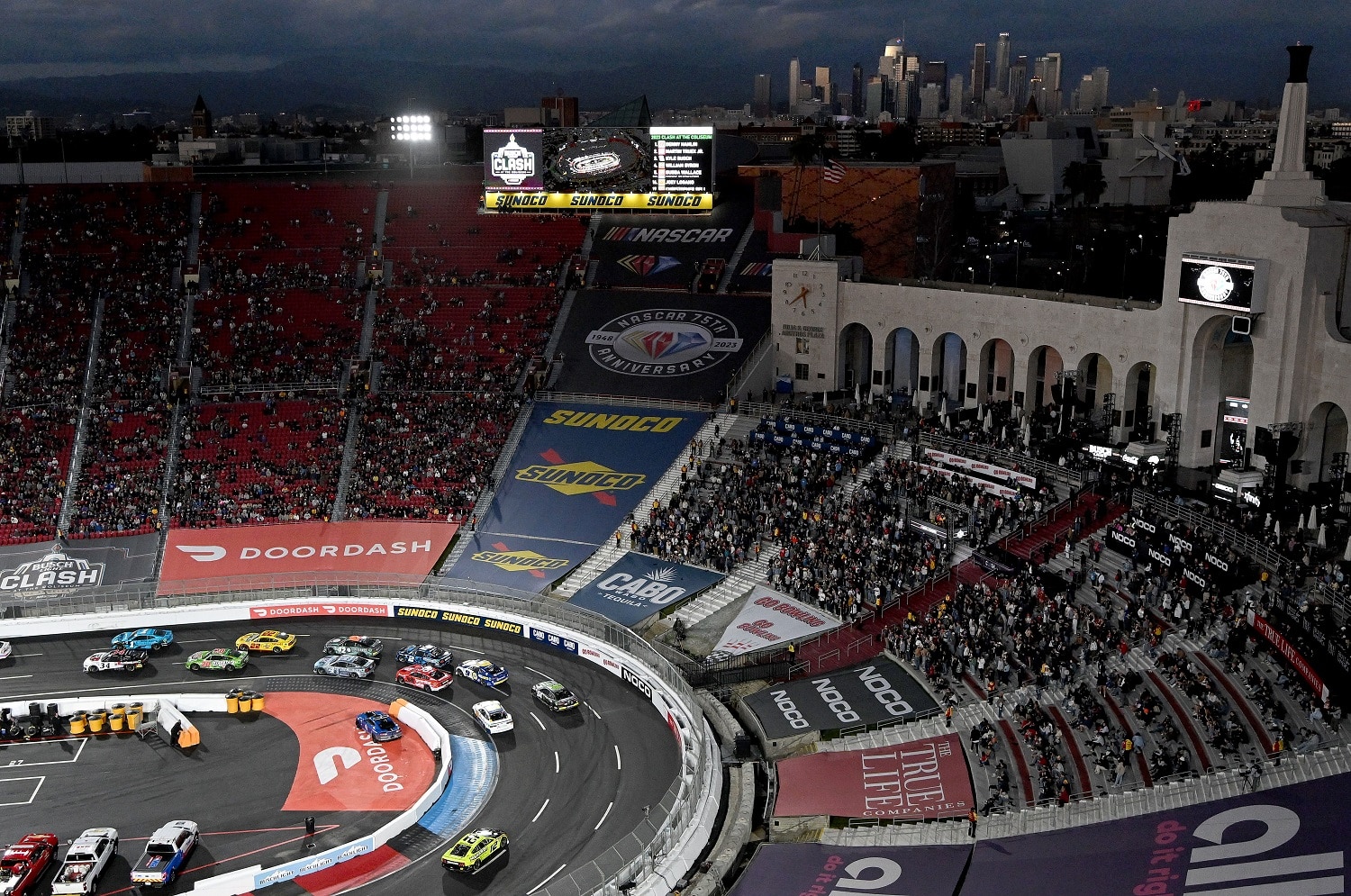NASCAR
Should NASCAR Replace Single-Car Qualifying With Heats?

Joey Logano and Martin Truex Jr. have been the two winners in the Busch Light Clash since NASCAR moved the season-opening exhibition to the Los Angeles Coliseum, but they haven’t been the stars of the show. That honor belongs to the format in which the Cup Series has introduced heat races to the action.
If it’s good enough for a high-profile event NASCAR hopes brings new fans to the sport, is it also worth using in points races?
Qualifying and heats are entirely different racing animals

The Daytona 500 hasn’t always been first on the Cup Series schedule, but it has been unique because of the two-stage process there that sets the field for The Great American Race.
The other 35 points races set their starting grid with qualifying, consisting of sending cars onto the track one at a time in pursuit of the fastest lap. The driver earning that honor starts the following day’s race at the front of the field.
The Daytona 500 adds a wrinkle. The hopefuls run those same qualifying laps on the 2.5-mile superspeedway, but that only serves to set the front row. The rest of the 36-car race field is determined by results from the Bluegreen Vacations Duels, a pair of 150-mile races.
Heats and the LCQs have become a big piece of the Busch Light Clash
NASCAR saw moving the Busch Light Clash out of Daytona and onto a quarter-mile track at the Coliseum as the time to overhaul the event, and some of it was out of necessity. Having opened the race to all chartered cars instead of just pole winners from the previous season, officials knew 36 cars were unworkable on such a small track.
NASCAR implemented a system of heats and last-chance qualifiers to thin the field. While the system is commonplace on weekends at regional tracks across the country, it was new fare for the Cup Series, and it worked.
This weekend in Los Angeles, Aric Almirola, Martin Truex Jr., Denny Hamlin, and William Byron won their heats against fields of nine, and 16 other drivers locked into the championship race. That left big names like Chase Elliott, Brad Keselowski, Christopher Bell, and Ty Gibbs scrambling to advance via the LCQs, two races of eight cars apiece. Elliott, Gibbs, and Bell made their way into the final by finishing in the top three.
It was exciting racing because it was right-sized for the tiny track. It didn’t take long in the subsequent final to realize 27 cars were three to five too many, as repeated cautions created a less-than-enthralling 150-lap event.
Should NASCAR replace single-car qualifying with heats?
Asked about the idea of inserting heats into Cup Series racing, Kyle Larson and Christopher Bell both seemed intrigued by the possibilities.
“I’m a big fan of sending people home,” Bell told The Athletic. “Making it competitive and having some sort of risk whenever you go to qualify has some value in the sport.”
That’s actually one of the issues keeping NASCAR from widespread use of heats. Sponsorship money is essential to the business model, and sponsors aren’t going to pay to see their car parked by the haulers while everyone else is racing on the track in front of the TV cameras.
Could heats work on at least a limited basis, maybe to spice up the action on the short tracks where the Next Gen cars didn’t put on a great show last season? Possibly, though maybe the solution is to use the heats as a way to spruce up qualifying without eliminating cars from the race.
At Bristol, Martinsville, or Richmond, perhaps it looks like three heats of 12 or 13 cars, and the fastest among the three heat winners pocketing money worth fighting for rather than just a commemorative pole flag. To keep the racing clean (Ahem, I’m looking at you, Busch Light Clash main event), perhaps every car from that heat moves up on starting grid the following day.
That’s just some quick-and-dirty spit-balling, but there should be something more exciting than single-car qualifying ahead of NASCAR main events.Got a question or observation about racing? Sportscasting’s John Moriello does a mailbag column each Friday. Write to him at [email protected].











